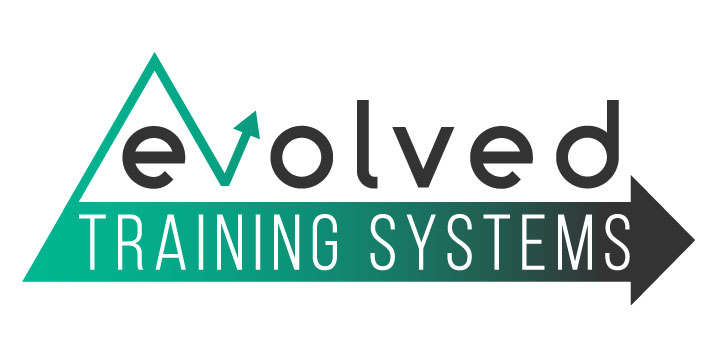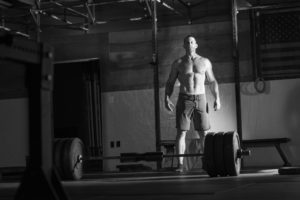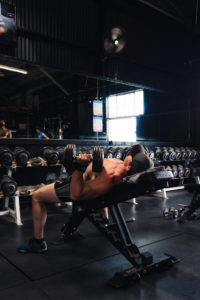The spectrum of variables in training provides the lab for experimentation.
The primary variables we can manipulate are Volume (the “dose” of total work), Relative Intensity (proximity to failure) and Frequency.
Volume has been heralded as the main driver of hypertrophy in recent years. This is very much due to a meta-analysis by Schoenfeld and colleagues (https://pubmed.ncbi.nlm.nih.gov/27433992/) which demonstrates a general trend in the direction of more sets being better than fewer sets for the studied populations.
In my view, the issue with these studies is that the majority are conducted on people that have no training experience, or maybe 6-18 months at most. Why is this relevant?
Relative Intensity is the effort level of the “volume” you complete.
If you are a novice trainee, how much “effort” can you really put in? Are you even aware of where your effort threshold exists?
Have you ever seen a novice person squat something like 120 lbs and say “that’s for sure my max.” But with a little coaxing and adding weight slowly, they end up squatting 150 lbs 10 min later. “Huh, who woulda thunk it?” (scratching head).
Volume and Relative Intensity work in contrasting fashion.
You can do “low effort” work for a long time, and accumulate a ton of volume (jogging, air squats, etc…) but this won’t build much muscle or strength.
However, imagine if the work is now high effort (all-out sprints, 10-RM set of squats, etc….) you will need longer recovery between bouts, and you will need only a few bouts to have maximized the intended stimulus.
If you’ve ever seen an advanced trainee take a set of squats to a true 10-rep max, that is not something that can be replicated for multiple sets. It was an all-encompassing effort for that individual.
In San Diego, there is a monstrosity of a hill called “Tourmaline.” It’s about 100 yards of a 50-degree incline the whole way. Tourmaline was 3 blocks from the gym I used to own. We would go there and do hill sprints. It would take about 30 seconds to sprint to the top, and 3 min to waddle down. Five total reps would put even the most fit humans into a hole for hours. This is Intensity over Volume.
All of this to demonstrate that as volume goes up, relative intensity MUST go down. If relative intensity is dialed up, then volume will have be lower out of necessity.
For these volume studies, which use primarily novice trainees, it’s a bit of a reach to extrapolate those results and apply them to a population that knows “failure” and has to struggle for weeks just to add 5 lbs to a lift. It just is not the same comparison, and I am pretty convinced that an advanced trainee will require more of an amplified training stimulus than a novice to continue to elicit progress.
————–
Stimulus to Time Ratio & Personal Anecdote
In all of the volume studies, there is an extremely steep diminishing returns spectrum of adding sets.
So even if we buy into more sets being better, there is an opportunity cost to consider.
It appears like we can get 80-90% of gains from 1 hard set as compared to 5 or 6 hard sets. This means that each set that is added from 1-6 provides *maybe* an additional 2-3%.
In the past 6-12 months, I have been progressively lowering volume in my own training.
For the prior years, I would usually do 3-4 sets for each exercise. All sets would be with the same weight, meaning I also had to do some ramp-up sets.
Even though each set would leave 2-3 reps from failure (lower relative intensity), it was still hard work, and it was time consuming.
As I gradually reduced volume, I intuitively began working slightly closer to failure.
The current state of my training has become the inspiration for this current training cycle.
Compound movements now receive just ONE TOP SET (usually 5-10 rep range) and then ONE BACKOFF SET (usually 10-15 rep range).
The top set is about 1-2 Reps from Failure, while the backoff set is usually 0-1 rep from failure (but try to avoid actually failing).
For the isolation and accessory work, I’ve been implementing a number of different intensity techniques. These techniques generally involve a moderate rep “buy in” set (such as 10-15 rep initial set), followed by multiple “cluster” sets with short rest. This can also be executed with supersets, drop sets, and other circuit style structure.
In this manner, we can achieve the stimulus of multiple short sets “near failure” without having to first get through the “easy reps” that take place in a 10-15 rep set.
This efficient style of training has been invigorating, and productive! I find it really rewarding to harness all of my effort and focus for one TOP SET versus having to divide my focus across multiple sets.
I am excited to share this style with you all, and look forward to any thoughts or feedback that you may be able to share!




